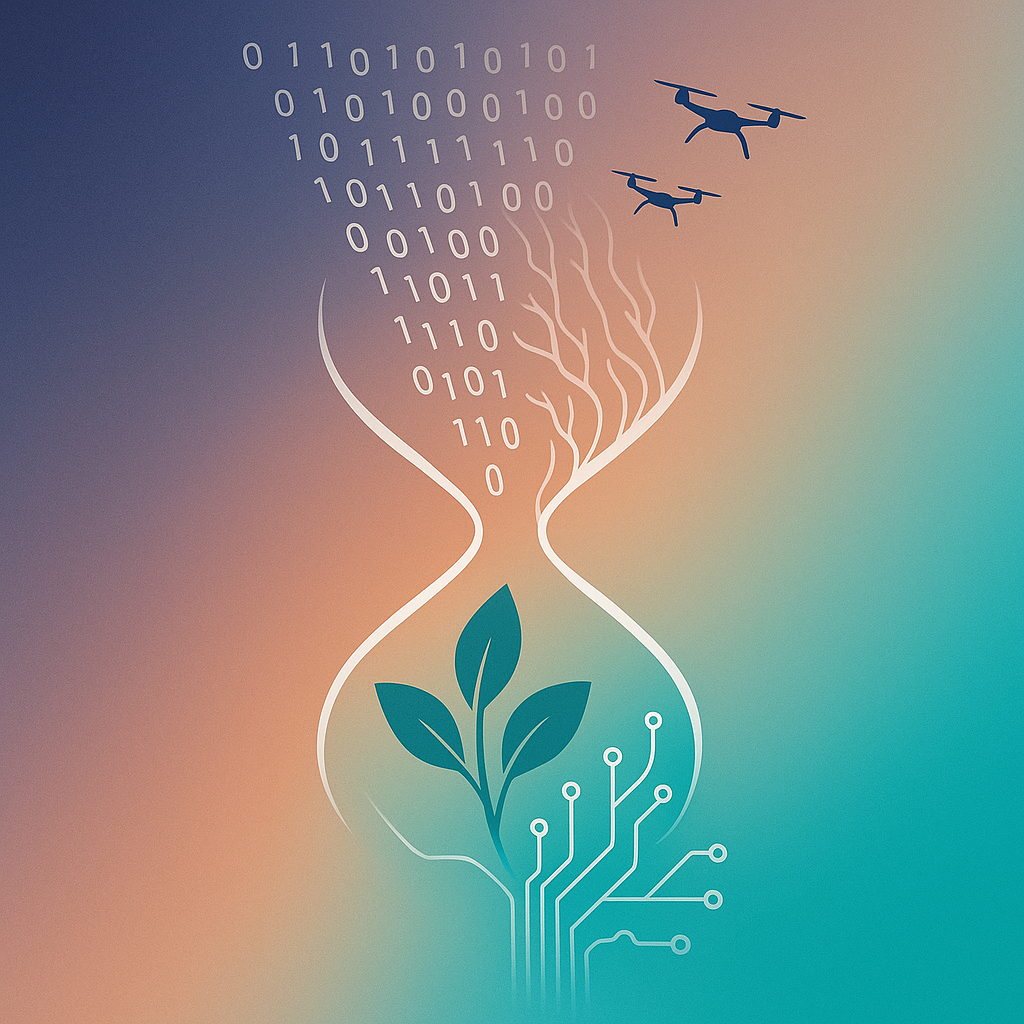1 – A THRESHOLD MOMENT
“There are decades when nothing happens; and there are weeks when decades happen.”
― Vladimir Ilich Lenin
Esteemed reader, we now inhabit precisely such compressed weeks. Advances in computation, shifts in climate, demographic inversions, and geopolitical tremors are no longer discrete phenomena to be studied in silos; they are co-evolving forces converging upon every facet of existence. This essay surveys those convergences, weaving narrative vignettes with the hardest data presently at hand, and offers a sober, hopeful argument: immense change is not merely imminent, it has already broken the levee, and our task is to steer rather than to resist the flood.
Consider Rajesh, a radiologist in Bengaluru. In 2022 his clinic interpreted roughly forty CT scans per day; by early 2025 a generative-AI assistant filtered, annotated, and pre-diagnosed seventy scans before Rajesh began morning rounds. He now spends twice as much time counseling patients and a fraction of the time staring at grayscale images. His personal story mirrors a global metric: corporate AI adoption leapt from a long-plateaued ~50 % to 72 % in a single year, with more than half of C-suite executives reporting daily use of generative models.
Technological diffusion of this velocity carries paradoxes. On the one hand, productivity surges and medical access broadens; on the other, labour markets rattle and epistemic trust erodes when synthetic text and voice become indistinguishable from the human original. As Rajesh told me, “I am more effective than ever—yet all the trainees ask whether there will still be jobs for radiologists.” Efficiency is not the same as stability.
2 – CLIMATE AND ECO-SYSTEMIC SHOCKS
Fifty-eight‐year-old María left the Petén lowlands of Guatemala after her third maize harvest failed from drought-punctuated heat waves. She now harvests berries in the Willamette Valley, sending remittances south while navigating an unfamiliar language and legal status. The Intergovernmental Panel on Climate Change warns that every increment of warming will “increasingly severe, often irreversible, impacts on ecosystems and human systems.” María is the embodied footnote to that abstract sentence.
Extreme weather already displaces more persons than war each year; crop yields of major staples are projected to decline 5-15 % per degree Celsius of warming, while food demand rises with population growth. Moreover, resilience strategies—micro-irrigation, salt-tolerant cultivars, managed retreat—demand capital and governance that many regions lack. Thus climate change is not a single headline but a universal stressor amplifying inequality, migration, and political discord.
Climate forces also entangle with supply-chain fragility. When record floods struck Guangdong in August 2024, several semiconductor substrate plants went offline, rippling through automotive and medical-device production from Detroit to Düsseldorf. Scholarly reviews now rank natural-disaster risk, driven by climate volatility, among the five largest disruptors of the chip supply chain in 2024. No smartphone, dialysis machine, or autonomous tractor is insulated from those cascades.
3 – THE AGE-STRUCTURE REVERSAL
While the planet warms, it also grays. The United Nations projects that by 2030 every fourth inhabitant of Europe or North America will be 65 years or older, and the global count of persons aged 80+ will triple between 2024 and 2050. In the mountain town of Hida, Japan, ninety-one-year-old artisan Kei Fujimoto now shares her home with an anthropomorphic care-robot that reminds her to hydrate, medicates her, and, poignantly, recites haiku on request. Hida’s schoolhouse closed for lack of children; its robotics workshop expanded twice.
Ageing societies will strain pension systems, shift consumption toward health services, and tilt political priorities toward preservation over risk-taking. At the same time, longevity research—senolytics, thymic regeneration trials, epigenetic-clock reversal—promises to stretch “health-span.” Yet if those therapies remain expensive, they may entrench gerontological inequality: the affluent live to 110 in vigorous health while gig-economy workers age conventionally. Thus demographic change is both biological destiny and policy choice.
Parallel to ageing, mental-health disorders have become the silent pandemic. The World Health Organization estimates depression and anxiety afflict nearly a billion people, already the leading cause of disability worldwide. Digital hyper-connectivity, climatic anxiety, and economic precarity are plausible accelerants. A future society that is simultaneously older and more anxious must redesign everything from urban spaces (walkable, cooling, social) to labour law (flexible, purpose-driven work) if it is to flourish.
4 – GEO-ECONOMIC REALIGNMENT AND HUMAN MEANING
Supply chains were once invisible arteries; they are now weapons. A 2025 détente between Washington and Beijing temporarily reopened rare-earth exports yet left both sides openly discussing “economic mutually-assured disruption.” States hoard lithium, photons, and datasets as surely as they once hoarded oil. Smaller nations build “friend-shored” alliances, seeking redundancy over raw efficiency. The Bretton Woods consensus of ever‐deeper integration is giving way to a patchwork mercantilism shaped by trust, technology, and territorial anxiety.
Against that backdrop, humanity confronts a philosophical reckoning: What is work when tasks are automated, what is locality when crises are planetary, and what is identity when biology itself is editable? I offer three convictions:
1. Stewardship over mastery. We must treat technology and biosphere alike as entrusted goods, not limitless substrates for extraction.
2. Institutional renaissance. Existing frameworks—schools, parliaments, journals—move at twentieth-century cadence. Either we invent agile, transparent replacements or we risk a legitimacy vacuum.
3. Narrative pluralism. Societies thrive on meaning, not data alone. The coming era needs new myths of solidarity that transcend narrow nationalism without dissolving local culture.
Return finally to our opening characters. Rajesh’s clinic now runs a pro-bono AI lung-cancer screening for low-income patients. María organizes a cooperative that teaches regenerative soil practice learned abroad to farmers back home via solar-powered phones. Kei programs her robot to preserve traditional lacquer techniques for schoolchildren who may one day return. Their stories illustrate a cardinal truth: change is colossal, but agency remains.
The river of transformation cannot be dammed, yet it can be navigated. Let us captain, not drift.
